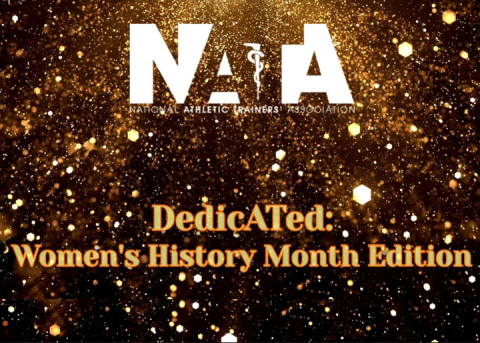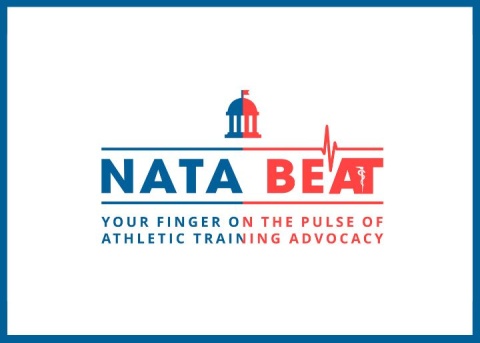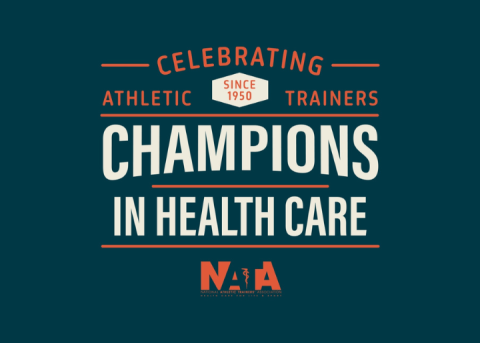
The May NATA News highlighted the works and achievements of the seven NATA Hall of Fame 2016 inductees. While every one of them has taken a unique path to the top of the profession, they all share a common thread: a drive to improve the profession as well as the lives of those for whom they care. Learn more about the 2016 class below.
David H. Craig, ATC, LAT
How has the profession changed throughout your career?
The athletic training profession has changed a great deal since I began as an athletic trainer in 1970. Certification was established with a relationship with the BOC. State licensures and now some states have reimbursement from health insurance and worker’s compensation.
The professional is more recognized by other medical professional groups such as the American Medical Association. Athletic trainers are asked to participate on state and national medical venues to establish statements of recommendations.
The scope has widened for dance and theater, industrial health, high school and junior high coverage as well as auto racing and club sports. The opportunities are vast from 46 years ago.
Athletic training as well as sports medicine in general has increased in knowledge and understanding; more techniques and manual medicine. Sports have always been known as the field of trial and error for improving the health of active people. Through our hands we have become a profession of “healers.”
Michael S. Goldenberg, MS, ATC
What are you most proud of when you look back on your career?
I am proud that I was able to take technology and use it for the betterment of regional, district and state associations, which in turn, introduced individual athletic trainers to the advantages of technology. For example, I was able to develop/modify computer programs used for online conference registration, online voting for officers and the use of listservs for email communication to members with the latest association news. I developed computer programs that helped district and state secretaries do their job in a more efficient manner. Once the technology was available, we used electronic methods, other than email, to make members aware of membership renewal deadlines that were missed. Outside of technology, I’m proud to be one of the co-chairs of the task force that produced the Inter-Association Consensus Statement on Best Practices for Sports Medicine Management for Secondary Schools and Colleges as well as being on the planning team for NATA Collaborative Solutions for Safety in Sport National Meeting.
Robert S. Gray Jr., MS, ATC
What prompted you to serve as a volunteer?
Shortly after taking the position with the Sports Medicine Consortium in Akron, Ohio, I worked alongside of Gary Lake, MEd, ATC. He was the past president of both the Ohio Athletic Trainers’ Association and the Great Lakes Athletic Trainers’ Association. His passion as a volunteer was contagious. Working with Lake, he opened many doors for me, which allowed me to grow professionally. The first door opened was the GLATA newsletter editor position. I maintained this position for 12 years and I knew afterward that I wanted to continue to be involved in the profession of athletic training at all levels: state, district and national.
David Scott Linaker, MS, ATC
What advice would you give to young athletic trainers just starting out in the profession?
Be passionate about athletic training; care about those who trust in you for their care; get involved in association business; work hard; be a leader; leave a positive, lasting impression on those whom you come in contact with; have a mentor; and when your time comes, be a mentor.
Dwight Eric McDonnell, MEd, ATC, LAT
Who helped you and mentored you throughout your career?
I had several great mentors. The first was Fred Wappel, ATC, head athletic trainer at the University of Missouri for an impressive 41 years and NATA Hall of Fame member. He welcomed me – this young kid from Platte City, Missouri – and gave me one of three slots available to freshmen in the internship program at the University of Missouri. He taught me about compassion, care and work ethic as well as dealing with all kinds of people from all kinds of backgrounds. The second was Glenn L. McElroy, MD, team physician for more than 40 years at Mizzou. He set a standard for care, which always put the patient ahead of everything else – no matter what their sport, performance level or background. I developed my philosophy from him that you treat everyone as if they were your own son or daughter. Finally, Keith Webster, MA, LAT, ATC, as NATA Governmental Affairs chair, modeled the role of a dedicated volunteer leader for our profession. He helped me understand the impact we can each have.
Patrick J. Sexton, EdD, ATC
Who helped you and mentored you throughout your career?
I was fortunate very early on to have mentors such as Gordy Graham, AT Ret., and Dr. Kent Kalm, AT Ret., at the then Mankato State University and Dr. Gary Delforge, AT Ret., and Ben Carbajal, MS, ATC, while at the University of Arizona (my bachelor’s and master’s programs) and I was fortunate to work with other tremendous professionals at each stage of my career – so many people who were all so professional and so motivated to serve the profession in some way that I cannot possibly name everyone here. Suffice it to say that I had great mentors early in my education, and so many “mentor-colleagues” throughout my career, as both a clinician and as an educator, I was always motivated to try and keep up with them. When you look up to people, you want to emulate the things they are doing. I have been fortunate enough to be taught and surrounded by some pretty great people.
Gary B. Wilkerson, EdD, ATC, FNATA
What’s your most memorable moment in the profession?
Delivering the 2015 Johnson & Johnson Day Presentation at the 2015 NATA Clinical Symposia & AT Expo in St. Louis with Dr. Brian Hainline, MD, and Ron Courson, ATC, PT, NREMT, was definitely the most memorable moment in my career. With such a large number of colleagues present, the opportunity to share deep convictions about the need for our profession to embrace a patient-centered philosophy in every practice setting was a very meaningful experience.




